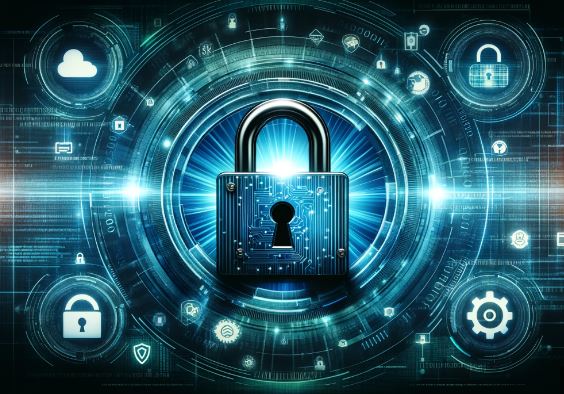This blog explores key strategies to ensure robust cybersecurity in the digital age. In today’s interconnected world, safeguarding your digital assets is more crucial than ever.
Understanding Cybersecurity Threats:
Understanding Cybersecurity Threats is essential in protecting your digital assets. Cyber threats can come in various forms, such as malware, phishing attacks, and ransomware. It is important to stay updated on the latest cybersecurity threats and understand how they can impact your organization’s security.
By understanding the different types of cybersecurity threats, you can better prepare and implement appropriate security measures to mitigate the risks. This includes having robust firewalls, intrusion detection systems, and antivirus software in place.
Implementing Strong Password Policies:

Implementing strong password policies is crucial in preventing unauthorized access to your sensitive information. Weak passwords are one of the most common vulnerabilities that cybercriminals exploit. By implementing strong password policies, you can significantly reduce the risk of a successful cyber attack.
Some key practices for implementing strong password policies include requiring complex passwords with a combination of uppercase and lowercase letters, numbers, and special characters. It is also important to enforce regular password changes and prohibit the use of common passwords.
The Human Element:
Recognizing that humans are often the weakest link in cybersecurity is essential. Phishing attacks, where malicious actors manipulate individuals into revealing sensitive information, highlight the importance of cybersecurity awareness and education.
Utilizing Multi-Factor Authentication:

Utilizing multi-factor authentication adds an extra layer of security to your digital systems. It requires users to provide additional information, such as a unique code sent to their mobile device or a fingerprint scan, in addition to their password. This significantly reduces the risk of unauthorized access, even if a password is compromised.
By implementing multi-factor authentication, you can ensure that only authorized individuals can access sensitive information and systems. It is particularly important for remote access and accounts with administrative privileges.
Secure Software Development:
Developing secure software is paramount in preventing vulnerabilities that could be exploited by cyber attackers. Implementing secure coding practices, regular code reviews, and conducting thorough security assessments are crucial steps in this process.
Regular Security Audits and Updates:
Regular security audits and updates are essential to maintaining a strong cybersecurity posture. It is important to regularly assess your systems and networks for vulnerabilities and address them promptly.
Performing regular security audits allows you to identify any weaknesses or potential security breaches. It also helps ensure that your security measures are up to date and effective against emerging threats. Additionally, keeping your software and systems updated with the latest security patches is crucial in preventing known vulnerabilities from being exploited.
Vigilant Network Security:
Organizations must invest in robust network security measures, including firewalls, intrusion detection and prevention systems, and regular network monitoring. These measures help detect and prevent unauthorized access to networks and sensitive data.
Regulatory Compliance:
Adhering to cybersecurity regulations and standards is not only a legal requirement in many cases but also an essential aspect of responsible data management. Compliance frameworks provide guidelines for implementing effective cybersecurity measures.
Employee Training and Awareness Programs:
Employee training and awareness programs play a crucial role in ensuring robust cybersecurity. It is important to educate employees about the best practices for cybersecurity and the potential risks they may encounter.
By providing comprehensive training, employees can learn how to identify and report suspicious emails, avoid clicking on malicious links, and protect sensitive information. Regularly reinforcing cybersecurity best practices through awareness programs helps create a security-conscious culture within your organization.
Conclusion:
As we navigate the digital landscape, the importance of robust cybersecurity measures cannot be overstated. Safeguarding our digital assets, protecting sensitive information, and fortifying critical infrastructure require a multifaceted approach. By cultivating a cybersecurity culture, embracing advanced technologies, and fostering collaboration, we can collectively become the guardians of the digital realm, ensuring a secure and resilient digital future for generations to come.
